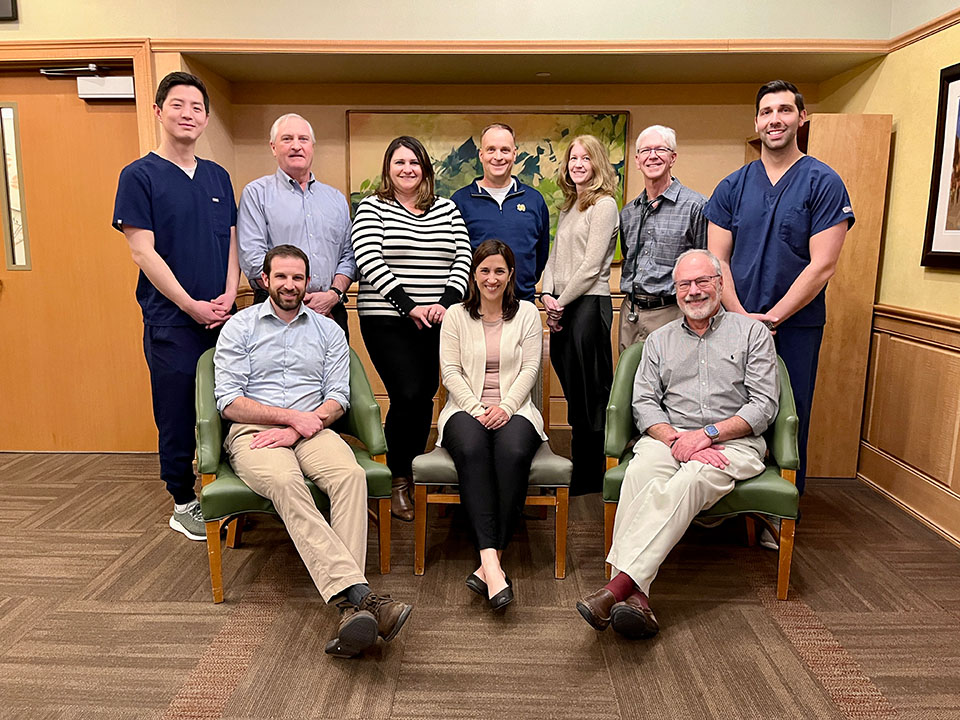Looking for Expert Vascular Care?
Discover advanced vein and artery treatments at The Vascular Care Group of York Hospital.
At Cardiovascular Care of York Hospital, our experienced team of cardiologists offers a full spectrum of cardiac care. This includes diagnostics like nuclear stress tests and cardiovascular ultrasounds, interventions like cardiac and peripheral vascular angioplasty, cardiac and pulmonary rehabilitation programs, and more. You can trust your heart is in good hands at York Hospital.
Our team is ready to help when an emergency strikes. But seeing if you’re at risk for cardiovascular diseases beforehand can make a world of difference. Discover your risk with cardiovascular health screenings.
Our Cardiac Catheterization Lab, a fixture in southern Maine since opening in 1986, is renowned for the diagnosis and treatment of heart and blood vessel diseases. We’re one of only four hospitals in the state of Maine to perform percutaneous coronary interventions, more commonly known as coronary artery ballooning or stenting. Our experienced cardiology team performs cardiac and vascular angiography as well as interventional care.
Our lab’s diagnostic procedures include:
Treatments include:
Our team of cardiovascular specialists offers extensive experience in all aspects of cardiology care: non-invasive cardiology, interventional cardiology, and electrophysiology. Each doctor brings a unique perspective and offers specialized care in the detection and treatment of heart disease, peripheral vascular disease, and disorders of the heart.
Back row (left to right): Christopher J. Yoo, DO, FACC; William A. Dietz, MD, FACC; Vera A. Ivanova, MSN, ACNPC-AG, FNPC; Jonathan S. Bridges, MD, FACC; Erin J. Rafferty, MD; David G. Cunningham, MD, FACC; and Alex J. Gold, MD, FACC.
Front row (left to right): John Knight, PA-C; Krista M. Michelin, MD; and Jeffrey P. Colnes, MD, FACC.

The following links lead to reputable sources for information on diagnostic tests, diagnoses, treatments, and support services.
Cardiopulmonary Rehabilitation of York Hospital
See location informationCardiovascular Care of York Hospital
See location informationYork Hospital Cardiovascular Care of New Hampshire
See location informationYork Hospital Cardiology Device Clinic
See location information
Cardiac Rehabilitation
See how closely our cardiac and pulmonary rehabilitation programs work together to help you recover and resume your everyday activities.
Learn more
Pacemaker & Implantable Defibrillator Clinics
Pacemakers and ICDs help keep your heart ticking as it should. Our team is experienced in implanting both and guiding you through maintenance.
Learn more